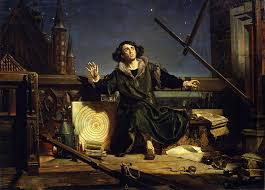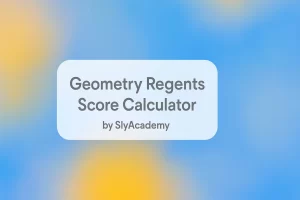“Causation in the Age of the Scientific Revolution” Everything You Need to Know
Imagine a world where natural phenomena were no longer attributed solely to the whims of gods or mysterious forces but were instead explained through observable, measurable causes. What if every falling apple, every orbiting planet, and every thunderstorm could be understood as part of a grand, logical order? In this comprehensive guide, we explore Causation in the Age of the Scientific Revolution—an era when thinkers began to unravel the mysteries of nature through the lens of cause and effect. We will delve into how ideas about causation evolved during this transformative period, examine key figures and milestones, and discuss why understanding these developments remains vital to our modern worldview.
Introduction: Uncovering the Secrets of Cause and Effect
In the centuries leading up to the Scientific Revolution, the world was often explained by tradition, myth, and religious doctrine. However, as the Scientific Revolution gained momentum in the 16th and 17th centuries, scholars began to champion a radically different approach: explaining phenomena through cause and effect. This shift not only redefined scientific inquiry but also reshaped the very way society understood the natural world.
A Captivating Hook
Consider this: before the revolutionary work of Galileo, Kepler, and Newton, the motion of celestial bodies was often seen as a manifestation of divine will. How did humanity transition from attributing the mysteries of the universe to supernatural forces to uncovering systematic laws of nature? What does causation mean in this new context, and why does it matter today? These are the questions we will explore as we journey through Causation in the Age of the Scientific Revolution.
What This Article Will Cover
In this post, we will:
- Define “Causation in the Age of the Scientific Revolution”: Clarify the concept and identify its essential characteristics.
- Explore Historical Context: Trace the origins and key milestones that influenced the development of causal reasoning.
- Delve into In-Depth Themes: Break down major ideas such as empirical observation, mathematical modeling, and the systematic search for causes in nature.
- Discuss Importance and Benefits: Highlight why understanding causation is critical for modern science, philosophy, and everyday decision-making.
- Address Common Misconceptions and FAQs: Debunk myths and answer frequently asked questions about the evolution of causal thinking.
- Examine Modern Relevance: Look at how the legacy of the Scientific Revolution’s approach to causation influences current research and technological advancements.
- Conclude with Key Takeaways: Summarize the insights and encourage further exploration of how causation shapes our understanding of the world.
By the end of this article, you will gain a deeper appreciation of Causation in the Age of the Scientific Revolution and understand its lasting impact on modern thought and scientific inquiry.
What Is “Causation in the Age of the Scientific Revolution”? A Clear Definition
Defining the Concept
Causation in the Age of the Scientific Revolution refers to the systematic approach that emerged during the 16th and 17th centuries to explain natural phenomena by identifying cause-and-effect relationships. This marked a significant departure from earlier explanations that relied on metaphysical or supernatural reasoning. The Scientific Revolution introduced a framework in which:
- Empirical Observation was prioritized.
- Experiments were designed to test hypotheses.
- Mathematical Models were used to predict outcomes.
- Natural Laws were formulated based on repeatable evidence.
Essential Characteristics
Empiricism:
Observations of nature, free from preconceived notions, became the basis for discovering causal relationships.Systematic Experimentation:
Controlled experiments were designed to isolate variables, allowing scientists to determine which factors directly influenced outcomes.Mathematical Precision:
Quantitative methods enabled the formulation of universal laws—such as Newton’s laws of motion—that describe how forces produce effects.Rejection of Supernatural Explanations:
Instead of attributing events to divine intervention, the focus shifted to natural causes that could be studied, measured, and understood.Interdisciplinary Integration:
Philosophy, mathematics, astronomy, and physics intertwined to create a robust framework for exploring causation.
Historical and Contextual Background
Setting the Stage: The Pre-Revolution World
Before the Scientific Revolution, explanations of natural events were often embedded in religious doctrine and ancient philosophy. In medieval Europe, for instance, the Aristotelian framework dominated intellectual life. Aristotle’s notion of final causes—that things occur for a purpose—meant that natural events were often seen as inherently goal-directed rather than driven by impersonal forces.
Milestones in the Evolution of Causal Thought
Early Seeds of Empiricism
Aristotle and the Four Causes:
Aristotle himself proposed four types of causes—material, formal, efficient, and final. While his approach was systematic, it blended empirical observation with teleological (purpose-driven) explanations.Islamic Scholars and the Transmission of Knowledge:
During the Middle Ages, scholars in the Islamic world preserved and expanded upon classical ideas, emphasizing observation and logical reasoning that later influenced European thought.
The Birth of Modern Causal Reasoning
Copernicus and the Heliocentric Model:
In 1543, Nicolaus Copernicus challenged the geocentric model of the universe. By proposing a heliocentric system, he set in motion a series of investigations into the causes behind planetary motion, shifting the focus from celestial purpose to mathematical and observable regularities.Galileo’s Empirical Observations:
Galileo Galilei’s use of the telescope to observe the moons of Jupiter and the phases of Venus provided concrete evidence for causal relationships in astronomy. His insistence on systematic observation laid the groundwork for modern experimental science.Kepler’s Laws of Planetary Motion:
Johannes Kepler used Tycho Brahe’s extensive astronomical data to formulate his three laws of planetary motion. His work demonstrated that the orbits of planets could be explained by mathematical relationships, moving away from mystical interpretations.Newton’s Synthesis:
Isaac Newton’s formulation of the laws of motion and universal gravitation in his seminal work, Philosophiæ Naturalis Principia Mathematica (1687), epitomized the success of the new approach. Newton’s laws provided a coherent explanation for both celestial and terrestrial phenomena, establishing a universal framework of causation based on empirical evidence and mathematical rigor.
Notable Historical Anecdotes
Galileo’s Trial:
Galileo’s public confrontation with the Catholic Church over his support of the heliocentric model is a dramatic example of the conflict between emerging empirical methods and established dogma. Despite facing persecution, his work fundamentally altered how cause and effect were understood in natural phenomena.The Royal Society:
Founded in 1660, the Royal Society of London became a bastion for experimental science and empirical research. Its motto, “Nullius in verba” (Take nobody’s word for it), encapsulated the shift toward evidence-based causation that defined the Scientific Revolution.
In-Depth Exploration: Key Themes in Causation during the Scientific Revolution
To appreciate Causation in the Age of the Scientific Revolution, we must examine several core themes that underpin this transformative approach.
1. Empiricism and the Scientific Method
The Role of Observation
Systematic Data Collection:
Scientists began meticulously recording observations to identify patterns and regularities in nature. For instance, detailed recordings of planetary positions allowed Kepler to discern his laws of motion.Repeatability:
A fundamental principle was that experiments and observations should be repeatable by others, ensuring that conclusions about causation were robust and reliable.
Experimental Design
Isolation of Variables:
Early scientists designed experiments that isolated single variables to test their effect. Galileo’s inclined plane experiments, for example, were crucial in understanding the acceleration of falling bodies.Controlled Environments:
Laboratories and observatories became central to scientific inquiry. By controlling conditions, scientists could more accurately attribute observed effects to specific causes.
Case Study: The Falling Body
- Galileo’s Experiments:
Through a series of careful experiments, Galileo demonstrated that the acceleration of falling objects is independent of their mass—a revolutionary insight that contradicted long-held Aristotelian beliefs. This experiment laid the foundation for later developments in physics, particularly Newton’s theory of gravity.
2. Mathematical Modeling and Universal Laws
The Language of Nature
Mathematics as a Tool:
Mathematics provided a precise language to describe natural phenomena. By quantifying relationships, scientists could derive laws that applied universally, regardless of location or circumstance.Predictive Power:
Mathematical models allowed scientists to predict future events based on observed patterns. Newton’s laws, for example, enabled predictions of planetary movements with remarkable accuracy.
Impact on Scientific Inquiry
From Description to Explanation:
Prior to the Scientific Revolution, descriptions of nature were often qualitative. The introduction of mathematical models transformed scientific inquiry, turning mere descriptions into explanations that could be tested and verified.Interdisciplinary Advances:
Mathematical modeling bridged the gap between disciplines. Techniques developed in physics found applications in astronomy, biology, and even emerging fields like chemistry, fostering an integrated approach to causation.
Real-World Example: Newton’s Gravitational Theory
- Universal Gravitation:
Newton’s law of universal gravitation not only explained why objects fall to the Earth but also why planets orbit the Sun. This law was a triumph of mathematical modeling, linking the motion of terrestrial and celestial bodies under a single causal framework.
3. Rejection of Teleological Explanations
Moving Beyond Purpose
From Final Causes to Efficient Causes:
In Aristotelian philosophy, events were often explained in terms of their purpose or final cause. The Scientific Revolution shifted focus to efficient causes—the forces and interactions that produce change.Objective Inquiry:
By rejecting explanations that relied on subjective notions of purpose, scientists embraced a more objective, mechanistic view of nature. This allowed for more rigorous testing and validation of causal hypotheses.
Implications for Science and Philosophy
Epistemological Shifts:
The move away from teleological explanations reshaped epistemology—the study of knowledge—by insisting that natural phenomena could be understood without recourse to metaphysical purposes.Philosophical Debates:
This shift sparked debates among philosophers about the nature of causation. Thinkers such as David Hume later argued that our understanding of cause and effect is based on habit and expectation rather than an observable “necessary connection.”
Historical Anecdote: Hume’s Skepticism
- Hume’s Analysis:
David Hume, an 18th-century philosopher, famously critiqued the notion of causation by arguing that we never directly observe a necessary connection between cause and effect—only a constant conjunction. His work highlighted the limits of human understanding and continues to influence philosophical discussions about causation.
4. Integration of Technology and Instrumentation
The Role of New Instruments
Telescopes and Microscopes:
Technological advancements such as the telescope and microscope opened new frontiers in observation. These instruments enabled scientists to gather data that were previously inaccessible, leading to new causal insights in astronomy and biology.Precision Instruments:
Devices like the barometer, thermometer, and pendulum clock improved the accuracy of measurements. Enhanced precision allowed for more detailed testing of causal relationships, bolstering the credibility of empirical research.
Case Study: The Telescope’s Impact
- Galileo’s Discoveries:
With his improved telescope, Galileo observed celestial bodies in unprecedented detail. His discovery of Jupiter’s moons, the phases of Venus, and the rough surface of the Moon provided concrete evidence for a heliocentric model of the solar system and demonstrated the power of instrumental observation in establishing causation.
Importance, Applications, and Benefits
Understanding Causation in the Age of the Scientific Revolution is not merely of historical interest—it has profound implications for how we think about the world today.
Advancing Modern Science and Technology
Foundation for Modern Scientific Inquiry:
The principles of empirical observation, experimentation, and mathematical modeling continue to underpin modern scientific research. These methods are essential for innovations in medicine, engineering, environmental science, and beyond.Critical Thinking and Problem Solving:
Learning how early scientists approached causation fosters critical thinking skills that are vital in both academic research and everyday problem-solving.
Shaping Educational Curricula
Interdisciplinary Learning:
Incorporating the study of causation into educational programs promotes a holistic understanding of science, philosophy, and history. This interdisciplinary approach equips students with the analytical tools necessary for tackling complex issues.Inspiring Future Generations:
The story of how causation was uncovered during the Scientific Revolution is a powerful narrative of human curiosity and perseverance. It serves as an inspiration for aspiring scientists, engineers, and thinkers.
Informing Public Policy and Decision-Making
Evidence-Based Policy:
The empirical methods developed during the Scientific Revolution have influenced modern policy-making. Governments and organizations that rely on data-driven decision-making are better equipped to tackle issues such as climate change, public health, and urban planning.Transparency and Accountability:
Understanding causation encourages a culture of transparency. When decisions are based on clear evidence and logical reasoning, accountability is enhanced, fostering trust in institutions.
Broader Societal Impacts
Philosophical and Ethical Debates:
The shift from teleological to mechanistic explanations has had a lasting impact on ethical and philosophical debates. Questions about free will, determinism, and the nature of human understanding are rooted in the discussions that began during the Scientific Revolution.Innovation and Economic Growth:
Technological advancements driven by a rigorous understanding of causation contribute to economic growth and societal progress. Innovations that improve quality of life—from renewable energy solutions to breakthroughs in medicine—are direct outcomes of the causal methodologies pioneered centuries ago.
Addressing Common Misconceptions and FAQs
Even a revolutionary concept like Causation in the Age of the Scientific Revolution is subject to myths and misunderstandings. Below, we clarify some common misconceptions and answer frequently asked questions.
Common Misconceptions
Misconception 1: “Causation Was Always Understood in the Same Way.”
Clarification:
Before the Scientific Revolution, explanations of natural phenomena were intertwined with teleological and metaphysical ideas. The shift to a mechanistic view of causation was gradual and met with resistance.Misconception 2: “Empirical Methods Can Explain Everything.”
Clarification:
While the empirical approach has dramatically advanced our understanding of nature, some phenomena—especially in complex systems—still pose challenges. Modern science continuously refines its methods to address these complexities.Misconception 3: “Causation Is Merely a Philosophical Concept with No Practical Value.”
Clarification:
The study of causation has practical implications in everyday life, from medical diagnostics to engineering and policy-making. It remains central to how we design experiments, predict outcomes, and make decisions based on evidence.
Frequently Asked Questions
Q1: What does “causation” mean in the context of the Scientific Revolution?
A: It refers to the systematic study of cause and effect in nature, where events are explained by identifying natural laws and relationships that produce observable outcomes.
Q2: How did the Scientific Revolution change our understanding of causation?
A: It shifted the focus from attributing phenomena to supernatural or teleological causes to a rigorous, empirical investigation of natural laws using observation, experimentation, and mathematical analysis.
Q3: Why is the study of causation still important today?
A: Understanding causation is fundamental to modern science, technology, and decision-making processes. It allows us to predict outcomes, design effective interventions, and develop innovations that improve quality of life.
Q4: Can the methods developed during the Scientific Revolution be applied to social and economic phenomena?
A: Yes. While natural sciences have benefited most directly, the principles of empirical investigation and data-driven analysis are increasingly used in social sciences and economics to understand complex systems and inform policy.
Modern Relevance and Current Trends
The legacy of Causation in the Age of the Scientific Revolution continues to influence contemporary thought and practice. Here are some current trends and developments that highlight its ongoing relevance:
Digital Transformation and Big Data
Data-Driven Science:
The methods of systematic observation and quantitative analysis have been amplified by the advent of big data and advanced analytics. Modern researchers use vast datasets to identify causal relationships in everything from climate change to social behavior.Machine Learning and AI:
Artificial intelligence leverages principles of causation by modeling complex interactions and predicting outcomes based on historical data. These technologies build upon the foundations of empirical research developed during the Scientific Revolution.
Interdisciplinary Research
Bridging Disciplines:
Modern science often integrates approaches from biology, physics, economics, and sociology to tackle multifaceted problems. The interdisciplinary spirit of the Scientific Revolution is echoed in today’s collaborative research efforts.Systems Thinking:
Researchers increasingly view phenomena as part of interconnected systems. Understanding causation in these contexts requires not only identifying individual factors but also understanding how they interact within a larger framework.
Public Policy and Evidence-Based Decision Making
Policy Formulation:
Governments around the world are adopting evidence-based policies that rely on rigorous data collection and analysis. This approach, rooted in the principles of causation, leads to more effective and transparent governance.Health and Environmental Planning:
In public health and environmental science, causal analysis is essential for designing interventions and predicting the impact of policy changes on populations and ecosystems.
Cultural and Educational Integration
Curriculum Innovation:
Educational institutions are increasingly incorporating the history and philosophy of science into their curricula. Courses that explore the evolution of causal reasoning help students appreciate how scientific methods shape modern knowledge.Public Outreach:
Museums, science centers, and digital platforms are making the story of the Scientific Revolution accessible to a broad audience. Interactive exhibits and online resources invite the public to engage with the concepts of causation and the history of scientific inquiry.
Conclusion: The Enduring Impact of Causation in the Scientific Revolution
Our exploration of Causation in the Age of the Scientific Revolution reveals a transformative period that reshaped humanity’s understanding of the natural world. By shifting the focus from supernatural and teleological explanations to empirical investigation and mathematical modeling, the Scientific Revolution laid the groundwork for modern science and technology. This approach to causation not only revolutionized how we study nature but also continues to influence our methods of inquiry, policy-making, and technological innovation today.
Key Takeaways
Foundational Shift:
The Scientific Revolution redefined causation by emphasizing empirical evidence, systematic experimentation, and mathematical precision, setting the stage for modern scientific inquiry.Broad Impact:
The principles of causation have far-reaching implications—from technological advancements and public policy to interdisciplinary research and everyday problem-solving.Enduring Relevance:
Modern trends such as big data analytics, machine learning, and evidence-based governance demonstrate that the insights gained during the Scientific Revolution remain vital in today’s complex world.Practical Benefits:
Understanding how cause and effect work not only enriches our intellectual heritage but also empowers us to make more informed decisions in our personal, professional, and civic lives.
Call-to-Action
Keep Exploring:
Dive deeper into the history and philosophy of causation by reading more about the Scientific Revolution. Consider exploring resources like the Stanford Encyclopedia of Philosophy or the Encyclopaedia Britannica for additional insights.Engage in the Conversation:
Share your thoughts and experiences in the comments below. Join online forums or local discussion groups focused on the history of science and the evolution of causal reasoning.Apply the Lessons:
Whether you’re a student, researcher, or decision-maker, let the rigorous methods of causation guide your approach to problem-solving and innovation. Advocate for evidence-based practices in your community and professional circles.
By embracing the legacy of Causation in the Age of the Scientific Revolution, we not only honor a pivotal moment in human history but also equip ourselves with the intellectual tools necessary to navigate the challenges of the modern world.
Final Reflections
Causation—the quest to understand why things happen—remains one of the most profound and practical pursuits of human inquiry. From the groundbreaking experiments of Galileo to the mathematical elegance of Newton, the legacy of the Scientific Revolution teaches us that through careful observation, critical thinking, and relentless curiosity, we can unlock the secrets of the universe. As we face new challenges and explore emerging frontiers in science and technology, the principles of causation continue to guide us, proving that the search for knowledge is both timeless and transformative.
Thank you for joining us on this deep dive into Causation in the Age of the Scientific Revolution. We invite you to subscribe for more insightful content, leave your comments below, and share this post with anyone interested in understanding how the power of reason continues to shape our world.







